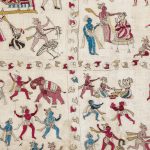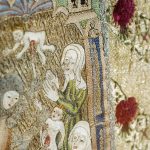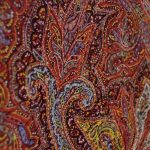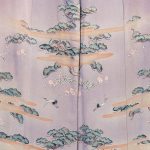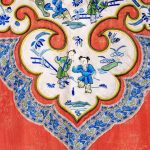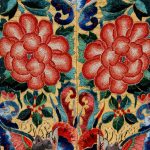A partnership between Gawthorpe Textiles Collection and Dr Rohini Arora to give an in depth look at two rare and precious examples of embroidery from the Chamba region of India.
View moreIn 1982 the Harris received a bequest from a local lady who had recently passed away. Miss Mabel Haythorn (born 1910) lived in an apartment in Frenchwood House in Preston her whole life. We believe she never married and had a private income. In her will, she left the Harris Museum & Art Gallery a […]
View moreIn 1982 the Harris received a bequest from a local lady who had recently passed away. Miss Mabel Haythorn (born 1910) lived in an apartment in Frenchwood House in Preston her whole life. We believe she never married and had a private income. In her will, she left the Harris Museum & Art Gallery a […]
View moreIn 1982 the Harris received a bequest from a local lady who had recently passed away. Miss Mabel Haythorn (born 1910) lived in an apartment in Frenchwood House in Preston her whole life. We believe she never married and had a private income. In her will, she left the Harris Museum & Art Gallery a […]
View moreThe Whalley Abbey Vestments are a set of exquisitely embroidered Medieval ecclesiastical garments with the full set comprising of a chasuble, two dalmatics and a maniple. Of these, the chasuble, maniple and one dalmatic are in the collection of Towneley Hall, while another matching dalmatic resides in the Burrell Collection in Glasgow. These vestments are […]
View moreThis jacket appeared in the Autumn/Winter 1991-1992 Collection by French designer Christian Lacroix. The design has modernised the traditional tartan pattern, using embellishments like sequins and rhinestones to emphasise the pattern. The key features are the intricately embellished pockets with beads and sequins applied to follow the pattern of the underlying check. This embellishment was […]
View moreThis beautiful textile is an example of an amli shawl, a technique where small woven pieces are hand sewn together and then further embellished with embroidery. Every step of the making process was labour intensive and required high skill levels meaning that amli shawls were highly prized luxury items. Unlike many other styles of shawl […]
View moreUnlike menswear, women’s clothing in the 18th century did not have ‘built in’ pockets and the modern handbag was yet to be invented. Instead, most women wore pockets like these on a tape around the waist, usually over the top of a petticoat but underneath the outer layer of the skirt. Slits could be left […]
View moreJapanese hiki-furisode-style robe, of ombre dyed silk crepe with padded hem and long sleeves and lined with bright red silk. The robe has blank spaces for crests in the small circles either side of the front opening. The beautiful mauve ombre provides a backdrop for the delicate painted motifs depicting auspicious cranes along with pine […]
View moreLeek embroidery was a style of embroidery created and popularised by Sir Thomas and Lady Elizabeth Wardle through the Leek Embroidery Society. Thomas Wardle was an influential silk dyer with a particular interest in Indian silks and natural dyes that influenced his research and experimentation with dyeing processes and materials. He worked alongside several key […]
View moreThis Qing era robe has a typical straight cut, loose fitting body with square sleeves. The simple shape is designed to make efficient use of narrow widths of silk so that as little as possible of the expensive silk fabric is wasted when the garment is constructed. The main fabric is a lightweight silk with […]
View moreSleeve bands were decorative cuffs and would have decorated the bottom edges of the sleeves on a traditional robe. They often featured designs that were a near perfect mirror image of one another so that when the hands were clasped in front of the body and tucked slightly into the opposite sleeve, the designs would […]
View more